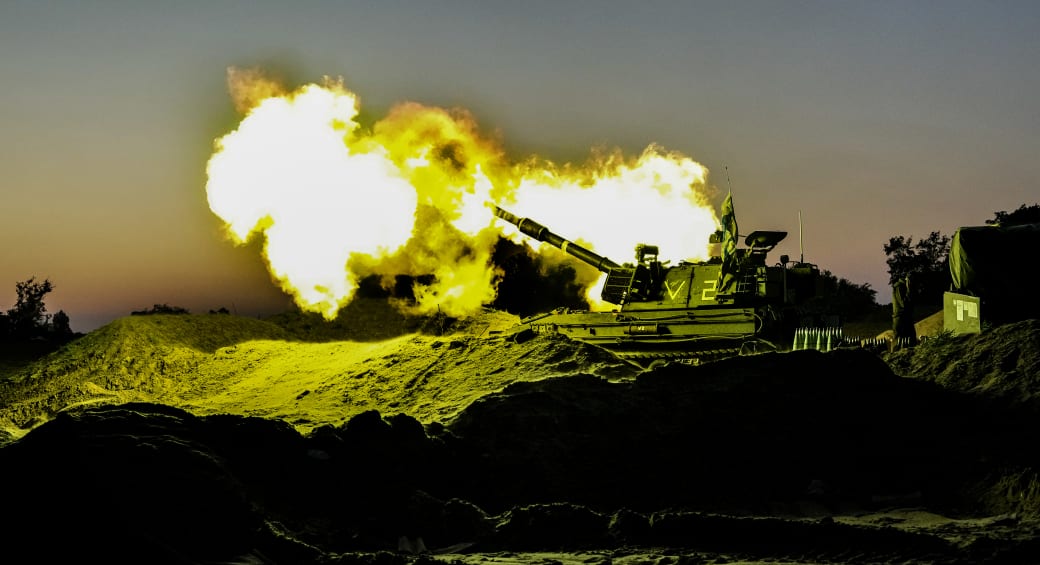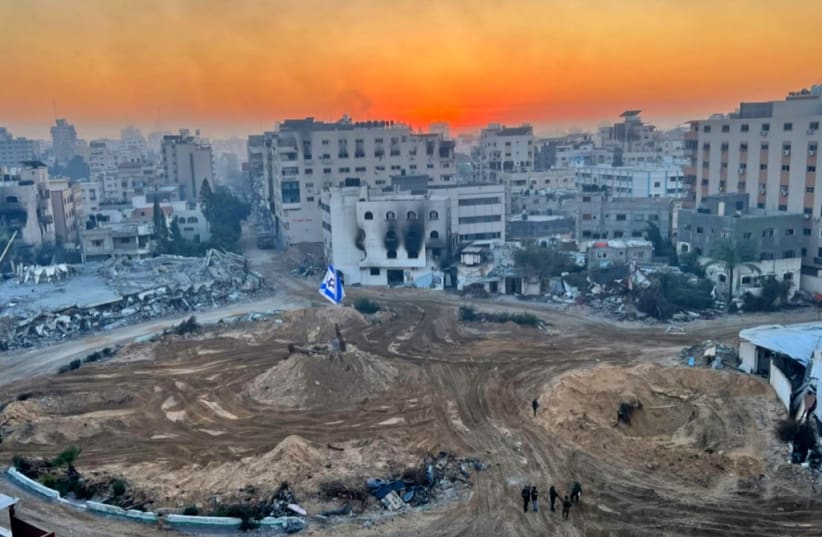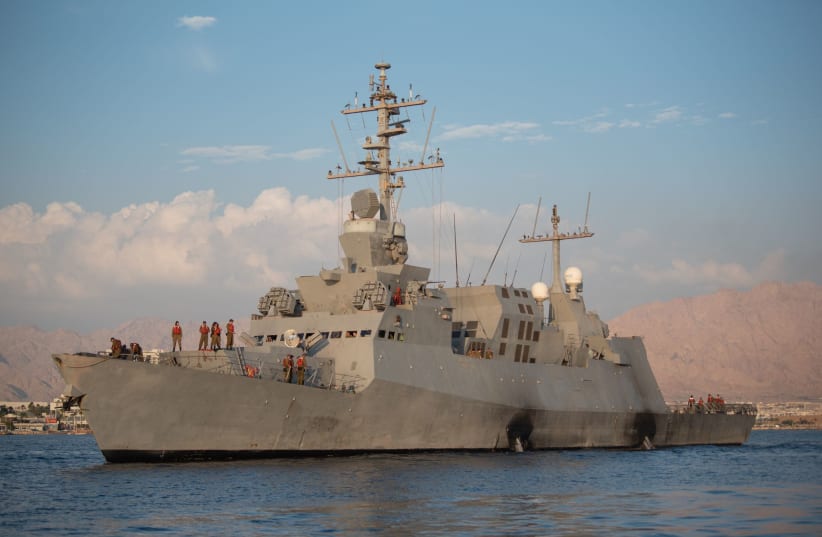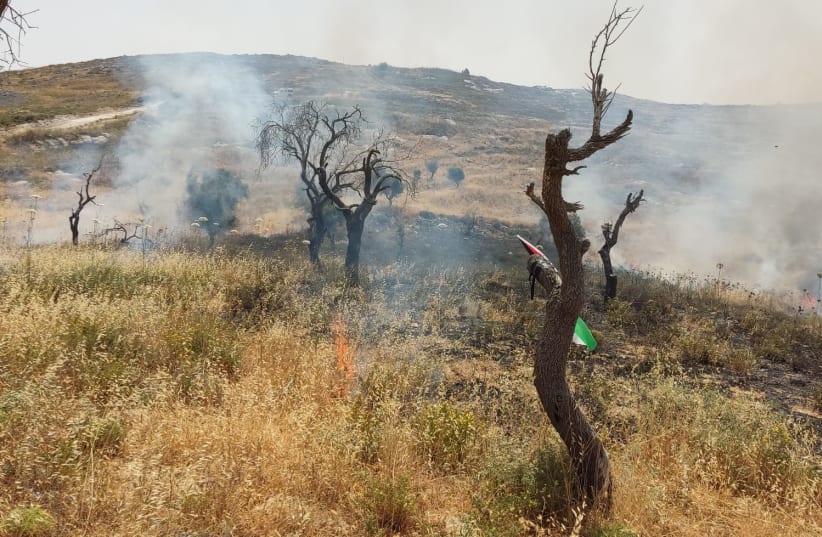Israel-Hamas War: What happened on Day 75?
IDF chief on northern border: There'll be a lot of action in coming year • IDF bodycam footage shows hostages days before killing by Israeli forces


IDF uncovers secret underground Hamas tunnels in Palestine Square
Hamas leaders Ismail Haniyeh, Yahya Sinwar, and Muhammad Deif use a network of secret underground web of tunnels to manage the organization’s operation and movement through the heart of Gaza City.


The IDF has seized control of a secret underground web of tunnels which both served as a bunker for the top Hamas leadership and as a transportation route to above-ground sites in and around Palestine Square in the Shuja’iyya neighborhood and in Gaza City itself.
“This is a city that exists on two levels, one above ground and one underneath,” Commander of the 401st Brigade, Major-General Beni Aharon told reporters, and the battle for it also takes place in both arenas.
Hamas leaders Ismail Haniyeh, Yahya Sinwar, Muhammad Deif used this network to manage the organization’s operation and movement through the heart of Gaza City, said the army, which has nicknamed the area “Commander’s Square.”
Using the tunnels for movement
They could also travel around through the tunnels, hide for a prolonged period if needed, or escape, the army explained.
“Hamas took enough generators and solar panels from civilians so that they could survive down there for months and even weeks,” Aharon said.
The Square was located between a high-class residential area, that includes a college, a hotel, a school for the deaf, and a fancy bridal shop.

Deputy Commander of the 401st Brigade, Lt. Col. Ido, whose full name can’t be used said, “From outside everything looks normal, everything looks like a normal city.”
A short distance away from the two schools, but in the square itself, the IDF uncovered two tunnel shafts and a tunnel-making workshop, which they showed to reporters on Tuesday afternoon, but they did not take them into the tunnels themselves.
The IDF also released to the media videos detailing their find, with shots of the underground tunnels, including one that led from a home of Sinwar’s in the square, in which a spiral staircase could bring him directly down into a concrete corridor, complete with electricity.
The tunnels were discovered under property owned by Sinwar and Haniyeh, and allowed for Hamas leaders to travel from home to the office and to other places within the city, the army explained.
What was found in the tunnels?
One office, now filled with debris, that the army showed reporters, is believed to have been used by Deif, with officers speculating that a wheelchair found in that room, could have been his.
The tunnels had electricity, water, phones, food, solar panels, security cameras, as well as rooms, including one that was 150 meters big. Arms were also found including rockets, RPGs and nighttime equipment.
An elevator was also found leading into a tunnel, used almost exclusively by Hamas leadership, the army explained.
Ido said that right off the square, which had been booby-trapped when they arrived. They also found a workshop for building tunnels.
“There are posters of instructions of how to build, when to do, what to do. You can see all around here cement and concrete and equipment for building the tunnel inside,” Ido said as he pointed to concrete slabs. “All these are the walls for the tunnel which are taken down with a high lift into the tunnels,” Ido said.
In the Square’s center had been a monument to Hamas’ successful attack against an IDF armored personnel carrier during the 2014 Gaza war, also known as Operation Protective Edge, in which seven soldiers were killed. This includes Oron Shaul, whose body has since been held by Hamas along with that of Hadar Goldin, also killed in that war.
It is also the place where some of the hostages were initially released, shots that were shown on Israeli television, in which the Square was filled with Palestinians.
Earlier this week, the IDF destroyed the monument.
The army seized the tunnels and the square thanks to the work of the 162nd Division’s 401st Brigade, which worked together with the Shaldag Unit and the 13th Squadron, which had also helped fight to secure the square from Hamas terrorists these last week, gaining almost complete control of it in the last few days.
The IDF estimates that it killed some 600 Hamas terrorists during that battle.
The square after the IDF attack
On Tuesday, when reporters arrived, the square was one large empty dustbowl of brown dirt, with a mound in the center.
On top of that mound was a flagpole, from which fluttered a large Israeli flag. Next to it was a large Hanukkah menorah, which was left standing, even though the holiday was last week.
“We arrived here before the first night of Hanukkah and in a tearful ceremony, we remembered those who had fallen and everything that we endured to get here and we lit the first candle,” Aharon said.
He added that he also loved the flag, which “has become a symbol of hope” and as “type of magic.”
Some of the buildings, such as the college and the school for the deaf were standing, but damaged, and others were reduced to rubble so that a ring of destruction also surrounded the square.
Reporters entered Gaza through a coastal road, first in a jeep, open in the back so that one could see how the road leading to Gaza City, and indeed every section of the city itself that reporters saw, had only destroyed, partially destroyed or damaged buildings.
At what soldiers called “the blue beach” which had been a resort, pagodas were partially destroyed and debris littered the sand.
From there they transferred to an armored vehicle with three soldiers at the helm, two of whom Elad and Deny explained how they had been in Gaza almost from the start, with little radio or telephone contact, including with their families.
One of them Elad, had a child’s drawing pasted to the top of the vehicle, with solider and blue stars next to it and the words “take care of yourselves” written out.
Elad said he received the picture in a care package and didn’t know who the child was, but he had placed it on top of the vehicle to remind him “why we are here and what we are fighting for.”
At the Square itself, much like the road leading up to it, there were no Palestinians in sight, and it seemed as if the city had become on strange ghost town, inhabited only by soldiers and journalists.
In one of the buildings journalists were taken into, soldiers had taken over apartments, which were still partially or livable. In one living room, they had placed mattresses on the floor. In another, they had set up a command center around a large fancy dining table, pasting a wall size Google type map on the wall, which they had found in a nearby office.
It was clear from the furniture and the tiles and hallway decor that the building had been modern, with expensive furniture, akin to what one could find in Tel Aviv or any other Middle Eastern city.
Aharon said that the terrain for the soldiers was no longer that of a civilian city, but one of combat.
During the time the group was there, three firefights broke out within a few block's radius, during which the IDF exploded the buildings, such that dust or flames and clouds of black smoke rose from them. Gun shoots and explosions could be heard in the distance.
Go to the full article >>Houthi threats prompt shipping companies to rethink Suez Canal use
If all traffic in the Suez Canal stopped, Egypt would lose about $13 million daily.


In light of the constant Houthi attacks on commercial vessels sailing near Yemen’s coasts, several shipping companies have announced in recent days that they will halt their ship flow through the Suez Canal until sailing in the Red Sea is safe again.
If this domino-like trend continues, Egypt could face massive foreign currency income losses and devaluation of its currency. Furthermore, if the situation continues for long enough, alternative trade routes could become more frequented.
Go to the full article >>IDF announces name of soldier who fell in southern Gaza
IDF Captain Lior Sivan, 32, fell in battle in the southern Gaza Strip on Tuesday, the IDF announced.
Sivan was from Beit Shemesh and a combat officer in the 363rd battalion.
Go to the full article >>‘We demand an end to all attacks’ by IDF, settlers, adviser to Palestinian President says
"Hamas is not the sole decision-maker for the Palestinian people."


Born in 1963, Mahmoud al-Habbash was raised in the Nuseirat Refugee Camp in the Gaza Strip. Since 2014, he has served as a Shariah judge and as an adviser to Palestinian President Mahmoud Abbas on religious affairs and Islamic relations. Before this, he was the minister of endowments and religious affairs from 2009 to 2014 and held the roles of social affairs minister and agriculture minister between 2007 and 2009.
Al-Habbash, who holds a doctorate, has also served as a lecturer at Al-Quds Open University. Affiliated with the Hamas movement until 1994, he eventually left to pursue an independent path and later founded the Union Party. Following the establishment of the Palestinian Authority, he joined the Fatah movement.
Go to the full article >>Israel-Hamas War: What you need to know
- Hamas launched a massive attack on October 7, with thousands of terrorists infiltrating from the Gaza border and taking some 240 hostages into Gaza
- Over 1,200 Israelis and foreign nationals were murdered, including over 350 in the Re'im music festival and hundreds of Israeli civilians across Gaza border communities